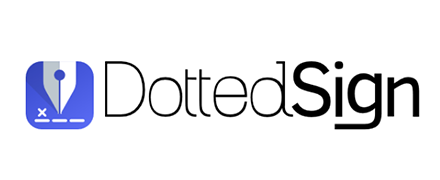What is An Electronic Signature? Complete Guide 2023
Over the years, individuals and businesses have relied on traditional signatures and physical paper documents to seal and certify binding agreements. Today, as internet access and adoption are rapidly increasing worldwide, more and more business is happening online. And, when starting a business, a wet ink signature is not sufficient for signing digital documents.
As a result, electronic signatures are being increasingly utilized by both individual users and organizations, solidifying their value for years to come. But, what exactly is an electronic signature? Read on to learn everything you need to know about e-signatures and how teams can employ certified digital signature solutions to streamline the document signing process.
Table of Contents
Understanding Electronic Signatures
An electronic signature, or e-signature, is defined as “symbols or other data in a digital form attached to an electronically transmitted document as verification of the sender’s intent to sign the document.” In other words, this allows a signer to give consent or show they approve of the document’s contents. Because of this, a digital signature today is regarded the same as a stamped seal or handwritten signature. Because of this, an online signature today is regarded the same as a stamped seal or handwritten signature.
E-Signatures vs Digital Signatures
Take note that while digital and electronic signatures are similar — there’s a difference. An electronic signature is a wider-encompassing term referring to any electronic process that indicates approval of a record or agreement, where the signer has demonstrated intent to sign on electronic documents. Digital signing, as an alternative, is a type of electronic signature that’s more secure. This highly safeguarded signature makes use of a digital certificate and is cryptographically bound to an electronic form using public key infrastructure (PKI) to minimize the tampering, altering, or forgery of important documents.
Who Uses Digital Signatures?
The short answer is everyone.
In fact, with the accelerated digital transformation, in combination with the pandemic and increasing remote opportunities, Finances Online reports that the number of e-signature adopters among businesses has increased by 50%, while the number of individual users is up by 13%.
But, while individuals and businesses alike can benefit from using a digital signature, some groups are more inclined to search for e-signature solutions than others. Electronic signature technology, or cloud deployment, is most frequently used by businesses that require the signatures of third-party partners including HR, sales, accounting, and legal departments across industries. Here are some of the other most common beneficiaries of a valid electronic signature:
- Executives and CEOs.
- Sales professionals.
- Accountant and financing professionals.
- Design engineers.
- HR professionals.
- Construction managers.
Is an Electronic Signature Legally Binding?

Electronic signatures are valid and legally binding in all U.S. states, given the same legal status as a wet ink or handwritten signature on a physical document. A secure digital signature complies with regulatory requirements such as the United States Electronic Signatures in Global and National Commerce Act (E-Sign Act) and the Uniform Electronic Transactions Act (UETA), along with other applicable international laws like electronic Identification, Authentication, and Trust Services regulation electronic Identification, Authentication and Trust Services regulation (eIDAS).
Is an E-Signature Legal Outside of the U.S.?
Yes. The World Trade Organization reports that more than 60 countries worldwide have some form of e-signature legislation. While each country’s laws have subtle nuances that distinguish them from one another, they are generally similar and intended for the same purpose: to protect businesses and citizens in the digital document signing process.
Are Electronic Signatures Secure?
Not only are e-signatures a secure method, but it can also be argued that they provide an even higher level of security compared to wet signatures. This is because it’s generally much easier for a handwritten signature to be forged or tampered with, whereas digital signatures incorporate multiple layers of authentication and security. With electronic signature software or cloud-based solutions, individual users and teams are provided with certificates of completion, an electronic record, and a tamper-evident seal to guarantee security.
Ultimately, a secure e-signature can be used for almost anything. With the legal weight of digital signatures in mind, some of the most common use case examples include:
- Purchase orders.
- Legal agreements.
- Sales contracts.
- Non-disclosure agreements.
- Employment contracts.
Types of Electronic Signatures to Consider — Requirements for Validity
Today, there are three distinct signature types, with deviations based on the eIDAS: While passed by the EU in 2016, this is similarly applicable in the U.S.
Recognized signature types include:
- Simple electronic signatures (SES): As the name implies, this is generally the broadest and simplest type of e-signature available. Best for everyday transactions, a simple electronic signature doesn’t require strong signer authentication or ID verification, meaning you can’t be sure the signature is uniquely linked to the signer or that it was created under the sole control of the signatory. Keep in mind that while an SES can carry legal weight in some cases, most documents require higher qualifications to be met.
- Advanced electronic signatures (AES): An advanced electronic signature, on the other hand, requires a level of identity verification that considerably increases the probability of identifying the signer. Typically certified by a Certificate Authority (CA), this uniquely linked advanced electronic signature allows the signer to retain control, often providing an audit trail or other types of evidence about the transmitted electronic data.
- Qualified electronic signatures (QES): Like an AES, a qualified electronic signature enables the identification of a signer. However, a QES takes this a step further calling for additional requirements, outlined in the eIDAS, to be met. These requirements include prior identification of the signatory by an audited entity, like a CA, and a digital certificate based on public key infrastructure that was issued with proper electronic means. In other words, a qualified signature creation device (QSCD) is used to create a qualified digital certificate, which must be issued by a qualified EU Trust Service Provider (TSP) on the European Union Trust List (EUTL.)
What Makes an Electronic Signature Valid?
For an e-signature to be considered valid, notably in a legal setting, particular standards need to be met. The requirements of a valid electronic signature that ensures recognition under U.S. E-Signature laws comprise of:
- Intent to sign.
- Consent to do business electronically.
- Association of a signature with the electronic record.
- Record retention.
A legal effect is only present if intent, security of the signed document, and prevention of tampering are clearly exhibited. The lawfulness of a digital document can be called into question if any evidence of alterations, tampering, or forgery transpires after the document’s been signed. For that reason, organizations are increasingly leveraging an e-signature solution that provides a detailed audit trail, proper security, and authentication.
Streamline the E-Signature Process With a Comprehensive Solution
While a wet signature is still a valuable, legal way to sign a document or complete a transaction, businesses can experience significant benefits by making an electronic signature. This includes helping organizations:
- Save time.
- Cut down on stationary costs.
- Support sustainability efforts.
- Sign documents remotely, at any time.
- Track and monitor the digital signature process.
- Assure the signer’s identity.
- Guarantee a secure, tamper-proof process.
With DottedSign, individuals and teams of all sizes can sign documents online and get e-signatures through electronic signature solutions in a fast, secure, and legally binding way. Take advantage of an encrypted process, comprehensiveaudit trail, and advanced security standards with an easy-to-adopt solution that works across all of your devices.Organizations can also connect DottedSign to Zapier to automate workflows and streamline your business process, enabling faster deal closures.
Ready to streamline the digital document signing process and future-proof your business with a secure e-signature? Sign up for free to get started.


